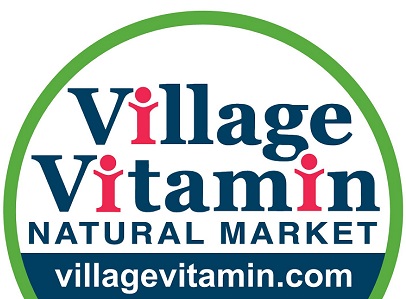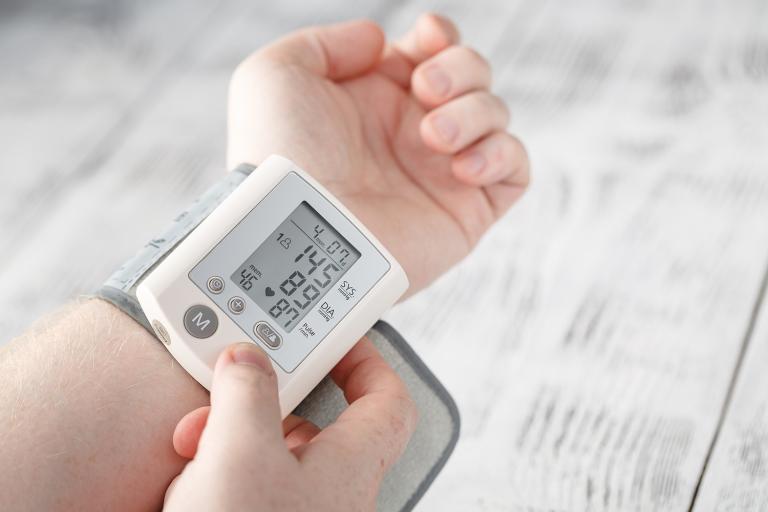What is Hypertension?
Blood pressure refers to the force of blood against artery walls. When this pressure becomes too great, the arterial walls may narrow or thicken, putting an extra burden on the heart. Blood pressure fluctuates over the course of a day. When it stays elevated over time, it’s called hypertension or high blood pressure.
A blood pressure level of 140/90 or greater is considered high. Systolic pressure—the first number in a blood pressure reading—represents the amount of pressure on the artery walls. The second number, or diastolic pressure, represents the lowest level of pressure.
If your blood pressure reaches between 120/80 and 139/89, you have a condition called prehypertension. You don’t have high blood pressure yet, but you may develop it unless you adopt a healthier lifestyle.
Why is High Blood Pressure Dangerous?
High blood pressure is the most common of all cardiovascular diseases and the leading cause of heart attack and stroke—the first- and third-leading causes of death among Americans.
If your blood pressure is too high, your heart has to work harder, eventually developing atherosclerosis, or hardening of the arteries. High blood pressure can also result in other conditions, such as kidney disease, diabetes, blindness, and congestive heart failure.
How Often Should I Get My Blood Pressure Checked?
Because hypertension is largely a “silent” or symptomless disease, it’s important to get your blood pressure checked at least once a year, starting at age 40. Symptoms—which include dizziness, headaches, nosebleeds, fatigue, ringing in the ears, insomnia, and sweating—can occur if blood pressure is already very high.
Who is Most at Risk?
High blood pressure is most common in African Americans and Hispanic Americans, those living in the southeastern states, and seniors. While certain risk factors—such as family history—are out of your control, there are many things you can do to lower your blood pressure, including exercising more, adopting a healthier diet, and taking supplements.
Prescription drugs are available to reduce hypertension, but a holistic, natural approach seems the wisest first course of action. Once hypertension develops, it usually lasts a lifetime, so take good care of yourself now to avoid future health problems.
How to Lower Your Risk
-
Get Off The Couch
Losing even 10 pounds can help lower your blood pressure. Aim for 30 to 60 minutes of aerobic exercise at least four days a week. Try reducing your daily stress level through t’ai chi or yoga.
Be sure to get enough sleep. Adults between 32 and 59 years of age who slept fewer than five hours a night had a significantly higher risk for hypertension, even after controlling for diabetes and obesity, than those who enjoyed a good night’s sleep, according to the First National Health and Nutrition Examination Survey.
You may also want to try meditation. The American Journal of Cardiology reports that people with hypertension who practiced transcendental meditation had a 30 percent lower mortality rate than those who didn’t meditate.
-
Eat Better
-
increase Fiber
Eat foods rich in fiber, such as whole grains, beans, and fresh fruits and vegetables. To get more produce into your diet, introduce change gradually by adding one vegetable or fruit serving to your lunch and dinner. Try eating fruit for dessert.
-
Reduce Meat Intake
Meat should be considered one small part of a meal, not the main attraction. Try having two or more meatless meals a week. Instead of eating a five-ounce serving of chicken, for example, make a stir-fry with two ounces of chicken and 1- cups of raw vegetables cooked in a small amount of vegetable oil. You’ll save 50 calories.
-
Eat Omegas and Antioxidants
Eat fatty fish rich in omega 3s (or take a supplement). Good juice choices include carrot, cranberry, orange, or prune juices. Celery, garlic, onions, and parsley have also been found to lower blood pressure. Scientific studies find garlic has the ability to reduce blood pressure by 6 to 8 percent.
-
Get Enough Potassium
Research shows that potassium lowers blood pressure. Some good sources include fish, dairy foods, and fruits and vegetables. Good picks include lima beans, bananas, oranges, raisins, and tomatoes. Tomatoes not only contain potassium but also lycopene. A double-blind, placebo-controlled study of hypertension patients finds that lycopene, an antioxidant-rich extract, significantly lowers both diastolic and systolic blood pressure. In small quantities, dark chocolate may also have beneficial effects on blood vessels and lowering blood pressure.
-
Avoid Alcohol and Salt
Alcohol and salt should only be consumed in moderation. Most people get too much salt in their diets. The current daily recommendation is less than 2.4 grams (2,400 mg of sodium). That equals about one teaspoon of table salt per day. To lower your sodium intake, cut back on or eliminate salty processed foods, which include canned vegetables and soups, frozen dinners, lunchmeats, instant and ready-to-eat cereals, and potato chips.
-
-
Take Supplements
James F. Balch, MD, recommends taking calcium (500 mg) and magnesium (250 mg) twice daily, as these minerals have been shown to lower blood pressure.
Other studies find that coenzyme Q10 also helps decrease blood pressure. Cardiologist Stephen T. Sinatra, MD, recommends 180 to 360 mg daily as part of any natural hypertensive-lowering regime. For high blood pressure, he suggests taking L-carnitine (500 to 1,000 mg), D-ribose (5 to 10 g), 1 g of fish oil, and a daily multivitamin/mineral. Take a balanced antioxidant formula that supplies 5,000 IU of vitamin A, 25,000 IU of beta carotene (or mixed carotenes), and 200 micrograms of selenium.
Other daily supplements that may lower blood pressure include green tea (50 to 100 mg), ginger (25 to 50 mg), and garlic (500 to 1,500 mg).

